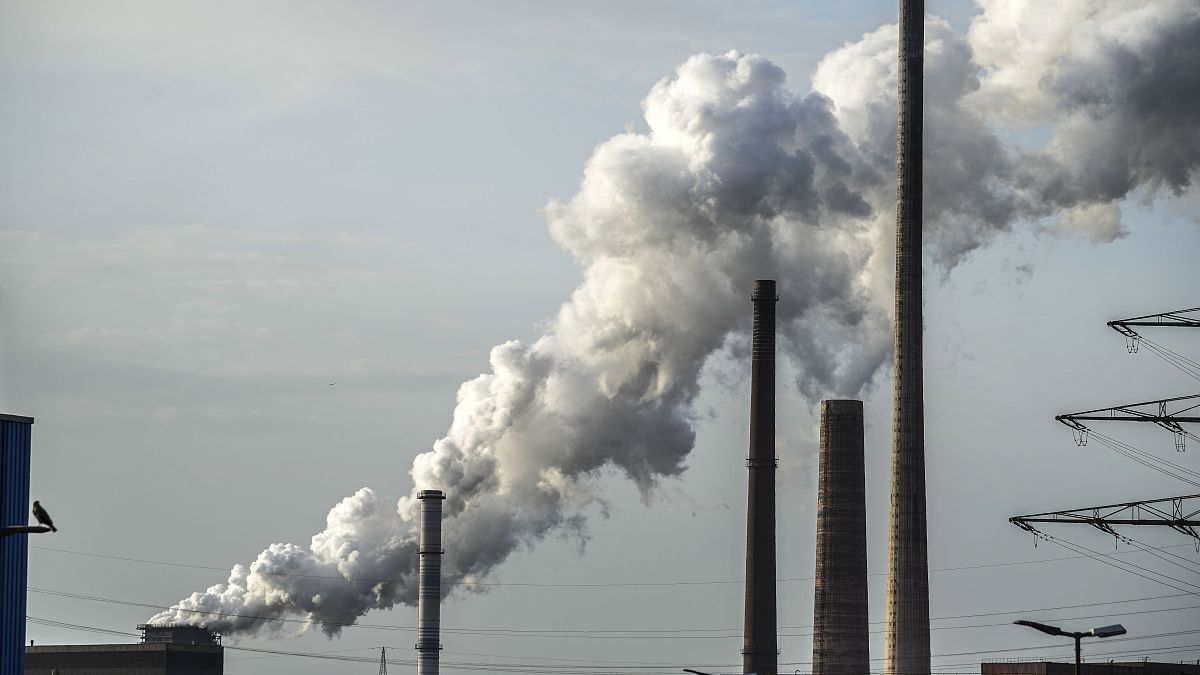Governments agree oil and gas firms must deploy permanent CO2 storage facilities at an unprecedented scale, but the industry argues it is pointless without also building up carbon capture and transport infrastructure, while NGOs fear the plans distract from the need to cut emissions at source.
The EU Council has backed a proposal to require oil and gas companies active in the EU to develop facilities for the permanent storage of carbon dioxide, with a capacity to absorb at least 50 million tonnes of the greenhouse gas every year from 2030 – more than doubling what is currently available worldwide.
Proposed in March as a European answer to a mammoth US subsidy scheme for green energy technology, the Net Zero Industry Act (NZIA) includes CCS in a list of strategic technologies where the aim is for domestic production to cover at least 40% of demand by 2030. But, in additional to promising streamlined permitting, it obliges petroleum firms to deploy the geological storage capacity the European Commission says is needed to drive a rapid scale-up.
To put the proposed target in perspective, more than 25 years of on-off development has seen a string of failed projects and led to a point where, according to a recent report from the International Energy Agency, only some 45 million tonnes is currently pumped into storage each year, typically in depleted oil and gas fields. And three-quarters of that is used to force out remaining oil through so-called enhanced hydrocarbon recovery.
In adopting the EU Council’s negotiating mandate at a summit in Brussels on Thursday, ministers agreed to an amendment – pushed by Denmark and the Netherlands, which have poured public money into domestic CCS projects – that would allow discretionary exemptions for oil and gas firms operating where infrastructure is already being deployed.
The European Parliament, which adopted its position on the NZIA in Strasbourg last month, also backs the 50 MT headline target, but wants to shift the burden from oil and gas producers alone to “each entity selling crude oil, petroleum products or natural gas” in the EU. The trade association CCS Europe enthusiastically supports the headline target, but director Chris Davies – a former MEP who steered through parliament the EU’s only dedicated law on CCS, the 2009 directive on the geological storage of carbon dioxide – thinks that would be going too far.
“This is the basis of a ‘carbon takeback’ obligation, which I think would be a good thing, but it has never been properly discussed by Parliament or Council, and this is not the place for it,” Davies told Euronews. He estimated pursuing such a policy would “delay everything by years” and was likely to be dropped during ‘trilogue’ talks, the forum where MEPs and government delegates hammer out the bulk of EU legislation behind closed doors with assistance from the European Commission.
Petroleum firms, who had been lobbying for the designation of CCS as a strategic technology, appeared to be caught off guard by the EU executive’s proposal they pay for it as well. The then Commission vice-president and Green Deal chief Frans Timmermans noted when presenting the NZIA proposal in March that claims from the industry that CO2 can be sequestered rather than released into the atmosphere were “only credible if they also know where to store the carbon once they have captured it”.
Oil and gas producers have argued they could be forced into investing in carbon storage facilities for which there might be no customers, and welcomed today the Council’s addition to the legislation of carbon capture technology and the transport networks needed to bring it from factories to the storage site. At present, all storage projects in the pipeline in the EU could absorb only about 35 million tonnes of CO2 a year, even if they materialise by 2030, the European arm of the International Association of Oil and Gas Producers (IOGP) said in an emailed statement.
“Our concern was that the Commission was focusing only on storage,” Nareg Terzian, head of strategy and communications at IOGP Europe, told Euronews. “Let’s say we have 100 million tonnes of capacity by 2030, but no CO2 in them – what good would that do?” he asked.
In a report last month, the International Energy Agency noted that only around 45 million tonnes of annual injection capacity is currently in use worldwide, and final investment decisions taken to date only promise the addition of another 20 million. Environmental groups argue that the petroleum industry’s interest in CCS is merely a justification for the continued exploitation of fossil fuel reserves.
The IEA appeared to acknowledge this concern, warning in its report that the industry’s engagement with the technology “needs to go beyond thinking of it as a means of securing a ‘social licence to operate’”. The agency’s executive director Fatih Birol said accepting the need to drastically reduce global greenhouse gas emissions would mean oil and gas firms “letting go of the illusion that implausibly large amounts of carbon capture are the solution”.
Carbon Capture and Storage is indirectly one of the key issues at the ongoing COP28 climate talks in Dubai, where a fierce debate is raging over whether the summit should end with an agreement to “phase out” or “phase down” fossil fuel use – or merely “unabated” fossil fuel use, where CO2 emissions are not sequestered with CCS.
Green groups reiterated their concerns about the inclusion of CCS in the EU's net-zero industry law. Camille Maury, a specialist on industrial decarbonisation at WWF European policy office said support for the technology risks diverting resources away from technologies that were “truly clean and can deliver fast decarbonisation, such as solar panel production, wind turbines and renewable hydrogen”. He also criticised the Council for failing to “acknowledge the need to prioritise the use of CCS only to certain residual emissions in industrial sectors that have no other decarbonisation options”.
For Boris Jankowiak at Climate Action Network Europe, the reliance on an “unproven” technology runs counter to the intention of the NZIA to help Europe reach its target of cutting emissions to 55% below 1990 levels by the end of the decade. “Member states’ intention to create a union market for CO2 storage services is purely sidestepping the priority to reduce emissions,” Jankowiak told Euronews.
The Commission included 14 plans involving networks for the transport of captured CO2 in its updated list of projects of common interest, published on 28 November. The executive also plans to set out its CCS development aims in an EU strategy for establishing an ‘industrial carbon management market’ by the end of the decade, which is slated for publication in the first quarter of 2024.



